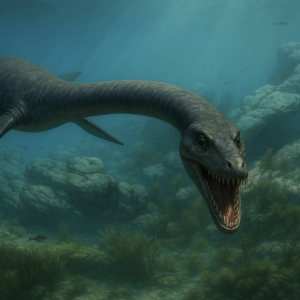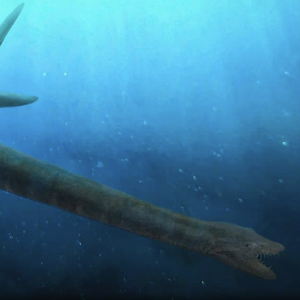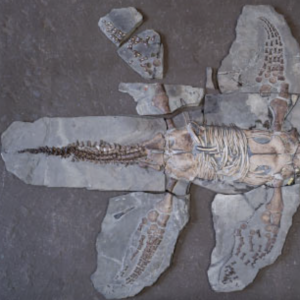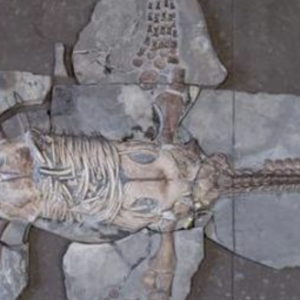A new specimen of Plesiopterys wildi reveals the diversification of cryptoclidian precursors and possible endemism within European Early Jurassic plesiosaur assemblages
A virtually complete and articulated plesiosaur skeleton (MH 7) is described from the Lower Jurassic (Toarcian) Posidonienschiefer Formation near Holzmaden in southern Germany. Plesiosaur remains are rare in this rock unit compared to those of other marine reptiles, such as ichthyosaurs and thalattosuchian crocodylomorphs. The new specimen offers an opportunity to assess the biodiversity of Early Jurassic plesiosaurs documented from what is now Central Europe.
In the Press

Jurassic Sea Monster Resurfaces: Rare Fossil Unveils Secrets of Plesiosaur Evolution

This Rare Fossil Connects The Dots In A 180-million-year-old Evolutionary Mystery
Daily Galaxy
.

New Fossil Provides Insights into Plesiosaur Diversity and Regional Specialization
“The Holzmaden specimen gives us an unprecedented look at Plesiopterys wildi in a more mature stage ofdevelopment, allowing us to refine our understanding of this species and its place in plesiosaur evolution,”
For All Readers - AI Explainer
What is Plesiopterys wildi, and why is this new fossil find exciting?
Plesiopterys wildi is a type of plesiosaur, one of the long-necked marine reptiles that ruled the seas during the Mesozoic Era. What makes this new find—nicknamed MH 7—so significant is its completeness and preservation. It’s one of the few nearly complete plesiosaur skeletons from the Lower Jurassic Posidonienschiefer Formation in Germany. The fossil gives us a rare window into the early evolutionary history of plesiosaurs and helps clarify how Plesiopterys wildi fits into the bigger family tree.
How does MH 7 differ from previous finds of this species?
The only other known specimen of Plesiopterys wildi is the holotype, which comes from an immature individual. MH 7, although still not fully grown, is more developed and better preserved, allowing for a clearer diagnosis of the species. It shows features we couldn’t previously confirm—things like certain skull and limb characteristics—which in turn helps fine-tune its position in the plesiosaur evolutionary tree.
What did your phylogenetic analysis reveal about where Plesiopterys wildi fits in?
Our analysis found that Plesiopterys wildi is an early member of the group Plesiosauroidea and is closely related to Franconiasaurus brevispinus and a larger group known as Cryptoclidia. This suggests that key plesiosaur lineages were already diversifying quite early in the Jurassic, possibly earlier than we used to think.
The paper mentions “possible endemism” in the Early Jurassic European seas. What does that mean, and why is it important?
“Endemism” means that some species may have been restricted to specific regions. In this case, the fossil record shows several distinct plesiosaur species in different parts of Europe during the Toarcian stage. That hints at a degree of regional isolation, possibly due to shifting coastlines, climate changes, or ocean currents. Understanding this pattern helps us reconstruct not just the evolutionary history of these animals, but also the ancient environments they lived in.
Why are discoveries like this still important today?
Fossils like MH 7 don’t just tell us about ancient reptiles—they give us broader insights into how biodiversity responds to climate shifts and environmental changes. That’s incredibly relevant today, as we try to understand how life on Earth might adapt to current and future challenges.
What’s next for your research?
There’s still much to uncover. We hope to examine other understudied specimens and localities to build a more detailed picture of plesiosaur diversity and distribution. Each new fossil has the potential to shift our understanding of these fascinating marine reptiles.
What are Article Spotlights?
Spotlighted articles are press released, and feature author interviews, AI explainers and more.
If you have published in Peer J and would like to be featured in an Article Spotlight please contact PeerJ.


